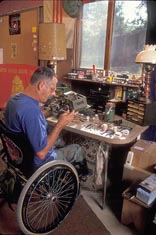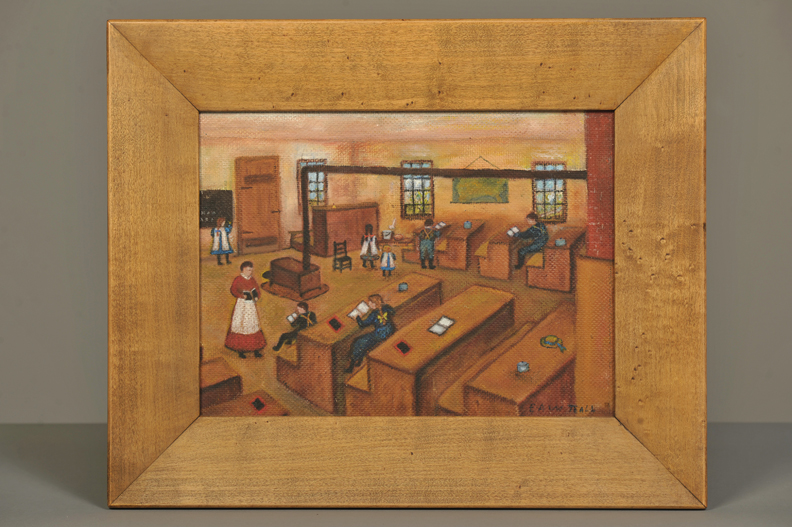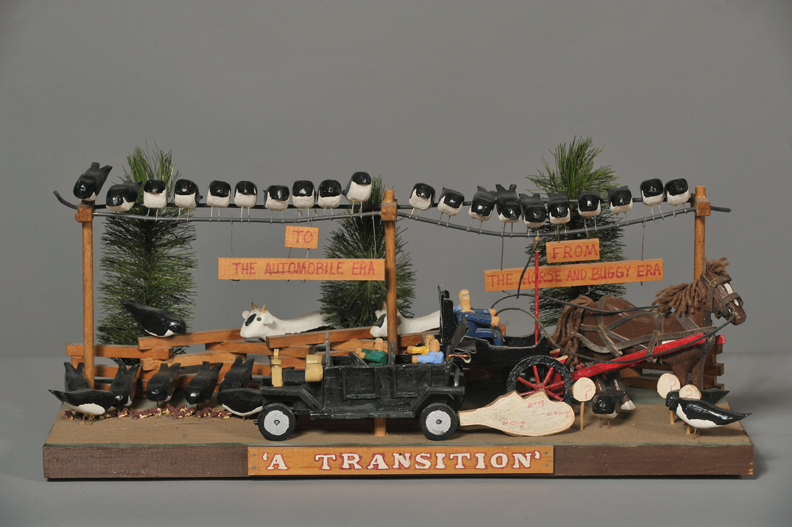Nostalgia:
Re-Creating Memories
 An
artist’s ability to recreate memories of shared group experiences
is often personal but highly desired and encouraged by his or her
group.
An
artist’s ability to recreate memories of shared group experiences
is often personal but highly desired and encouraged by his or her
group.
Great emphasis is placed on precise detail and the object's ability to capture a complete scene or event. Such art work is often created at a time when the artist feels isolated from other members of the group because of retirement, disability. or personal loss.
Case Study
Michael Cousino
When he was 17, Michael Cousino left Gouverneur to join the U.S. Marine Corps. After training was stationed near the DMZ in
Vietnam. A battle injury ended his 13-month tour of duty as a
“grunt,” or ground soldier, and he returned to the United States
for rehabilitation and discharge. For the next several years he
struggled with his injuries, both physical and emotional. Shortly
after returning to St. Lawrence County, he joined a veterans’ group
for counseling.
When he had difficulty talking about his experiences in Vietnam, a friend suggested he use his hands to make dioramas of specific incidents. What followed was a flurry of activity as he modified plastic kits of models of World War II–era men and women and machines and fashioned scraps of plastic, wood, and metal from around his house. Since those days, he has made nearly 300 scenes, many inspired by painful stories shared in confidence by new buddies and fellow veterans.
The artwork has become therapy for Mike and his friends, and a way for him to teach younger generations about the experiences of the ordinary soldier. His story as a veteran and an artist—including these and many other “scenes”—is told in a book called Vietnam Remembered: The Folk Art of Marine Combat Veteran Michael D. Cousino, Sr., written by Varick Chittenden and published by the University of Mississippi Press in 1995.
These examples from Cousino's collection, which hecreated in the 1980s, are typical of his work: made to a 1:35 scale with amazingly intricate features. The details of his dioramas reveal his natural storytelling talents.
My Hootch at Red Beach
“This is what I first saw in Vietnam. This scene depicts me with a seabag and pack on the boardwalk in front of my “hootch,” the Vietnamese word for small house. In the countryside, the hootches were very primitive structures, but we called these American military structures hootches anyway.”
Checkpoint Charlie
“It was typical at every military base in Vietnam, you always had a checkpoint, the main entrance for going on and off that base. This scene depicts a bunch of grunts, infantry. Their job is to look for weapons, check ID, make sure that the picture that’s on the ID resembles the person that was holding it, to stop the Vietnamese from infiltrating onto American bases.”
Malaysian Gate 7 Punji Pit
“This one is a Malaysian gate, which will swing to impale punji stakes into the chest or lower abdomen of anybody that’s walking down that trail. Nine out of ten times it will be an American. Sometimes the VC get caught in their own trap. At any rate, the American has to think fast and do what he has to do. This is the kind of memory lots of guys don’t want to talk about.”
No Time to Stop to Pick the Flowers
“Parts of Vietnam are very, very beautiful. An awful lot of places in North Vietnam and I Corps, where I was at, reminded me of home in St. Lawrence County. This scene depicts me on the tank as a hitchhiker. We just got tired of walking, a tank came by and we thumbed a ride.”
Schoolroom
Edna West Teall, Lewis, ca. 1960
Courtesy of Adirondack Museum
This oil painting on canvas illustrates Lewis native Edna West Teall's memory of the interior of a one-room country schoolhouse she once attended. After retirement from a career in journalism in New Jersey, she returned to the Adirondacks and wrote and painted extensively about her childhood spent there in the 1880s. She painted more than 40 different scenes of daily life, from making soap to baptizing in the river and Saturday night baths.
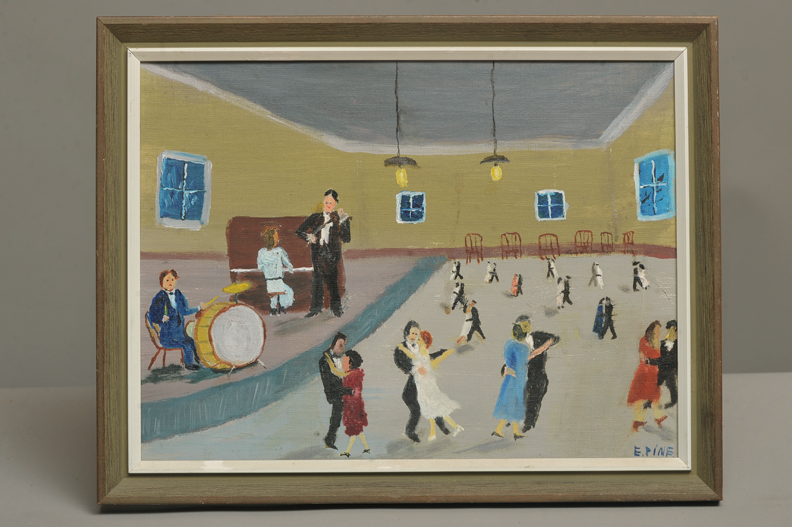 Pine & Ladies Orchestra
Pine & Ladies Orchestra
Emmett Pine, Keeseville, 1967
Courtesy of Stanley Ransom
Emmett Pine loved local history and for more than 50 years he recorded local scenes and memories of his life in the Ausable Valley with paint and brush. In 1934, when his son Juan was taking an interest in oil painting, Mr. Pine decided to try painting himself. He was completely self taught. His topics were almost always local, capturing landmarks and landscapes that resonated with neighbors and friends. Pine was also well known as a musician, playing the drums for the Pine and Ladies Orchestra, while his wife played piano. A fiddler or other musicians would join them—as this painting shows—in popular local dance halls of the day.
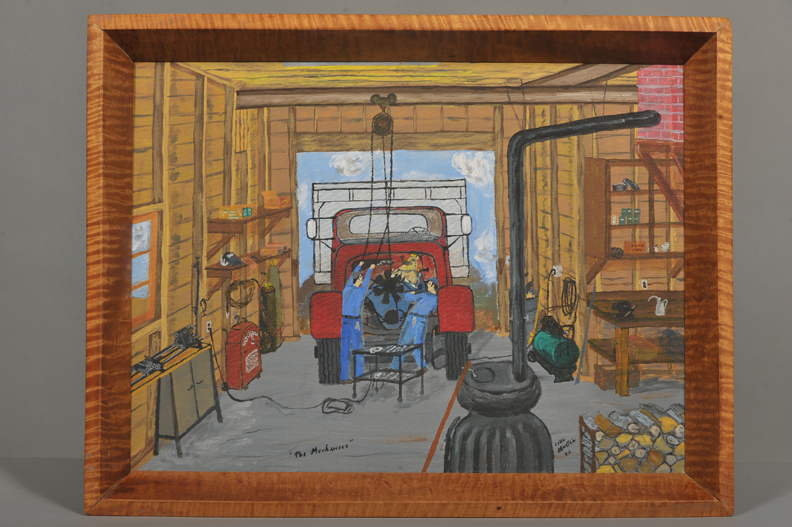 The Mechanics
The Mechanics
Carl Martel, Ogdensburg, 1987
Courtesy of Glory Martel
Men in a shop working on the engine of a dump truck may seem an unusual subject for a painting, but not for Carl Martel. A talented logger and heavy equipment operator, he admired mechanics and the work they do. But he also was artistic and worked with wood, stone, and metal to make his home a showplace. After Martel took up oil painting on a whim, he created numerous scenes like this one, of men working in the woods or on construction sites, based on his own experiences.
Maple Sugaring in the Old Days
Robert Elethorp, Hammond, ca. 1960s
Courtesy of the Robert Elethorp Historical Society and Hammond Museum
Rob Elethorp often said he “grew up with a jackknife in his hand.” Learning to carve as a boy, he made many things of wood—from endless chains whittled from one piece of wood to human and animal figures to populate his dioramas of rural life. He created several large models of local landmarks in the Hammond area, like the local Presbyterian Church, the Grange Hall, a cheese factory, and a one-room schoolhouse. This scene of making maple syrup as pioneers did was recalled from his childhood in the late 19th century.
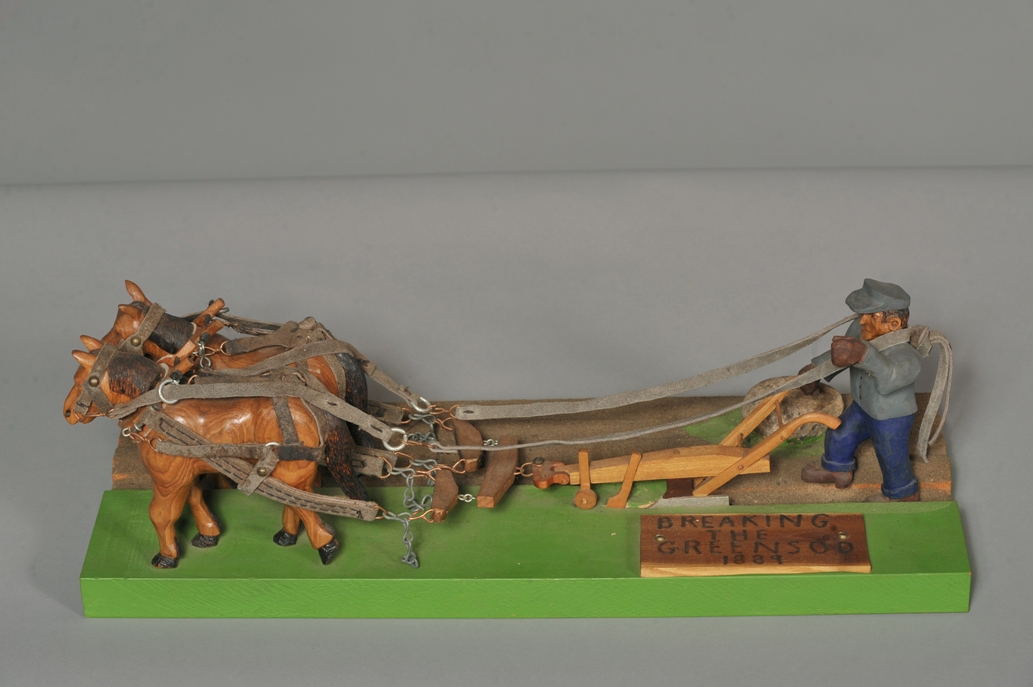 Breaking the Green Sod
Breaking the Green Sod
Howard Huntley, Long Lake, ca. 1960
Courtesy of Ann Huntley
Howard Huntley grew up on a century-old family dairy farm in Pierrepont, but lived most of his adult life in the Adirondacks. Later in his life, as a hobby he carved and painted several models depicting work on the farm or in the lumber woods using horse-drawn equipment. This scene recalls the rather complicated way of breaking new ground for tilling on a North Country farm. Perhaps it was easier to describe visually the method of placing and using the horses than it was verbally.
A Transition
Fred Morgan, Norwood, ca. 1980
TAUNY Fred Morgan Collection
Known for miles around Norwood for creating a mailbox from an old sousaphone, Fred Morgan was also known locally as a tinkerer. After retiring from his TV and radio repair shop, he made numerous models of local buildings and several editorial cartoons in three-dimensional dioramas. He had a mischievous sense of humor, which shows in this scene illustrating his view of the pros and cons of changing times in the rural America of his lifetime, when the car began to replace the horse and buggy.
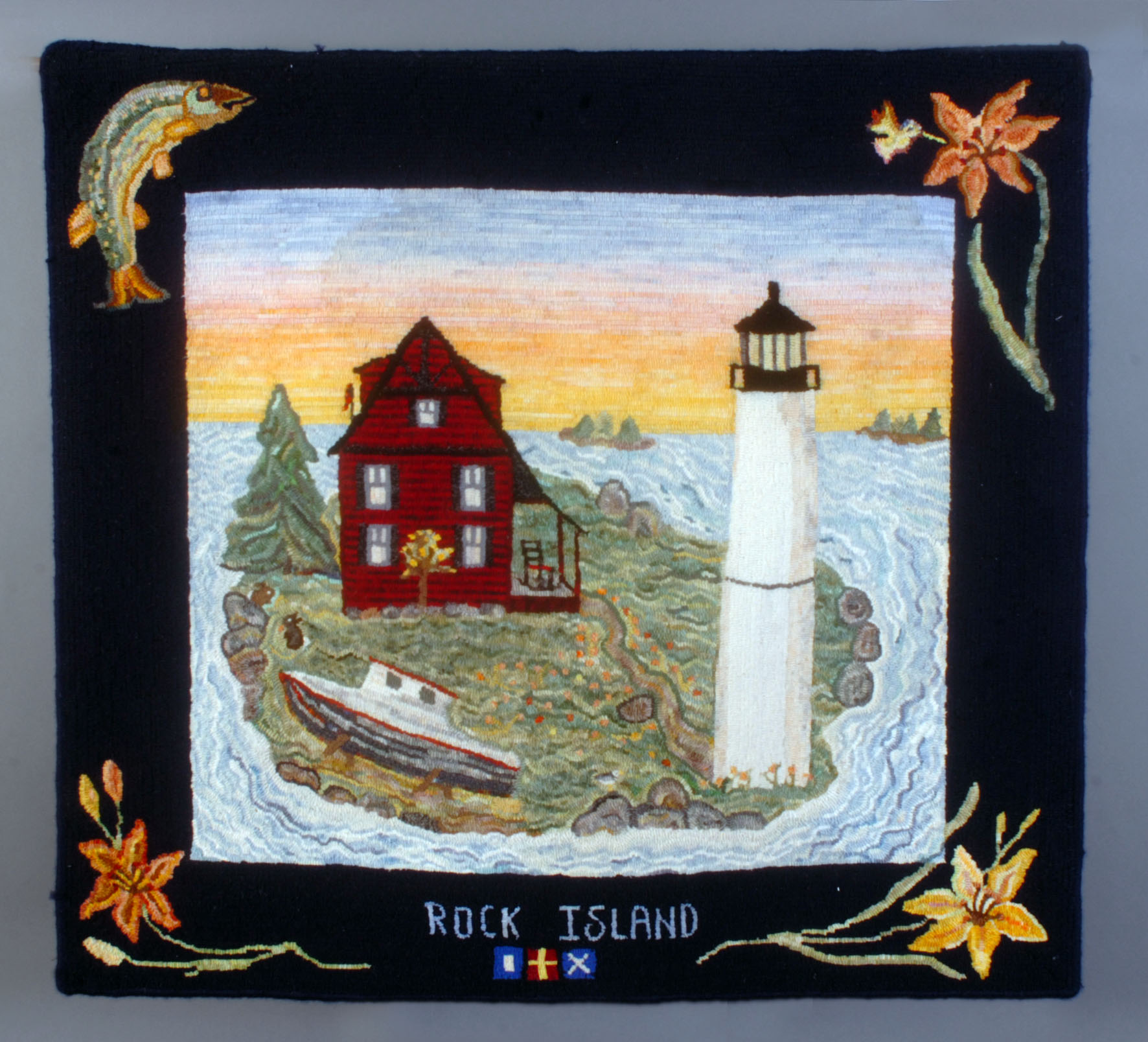 Rock Island Lighthouse
Rock Island Lighthouse
Prudence Matthews, Fishers Landing, 1993
Courtesy of the artist
Rock Island Lighthouse, as seen from her cottage dock, is the subject of this large pictorial hooked rug by Prudence Matthews, a lifetime summer resident of Fishers Landing. Matthews depicts memories of life on the St. Lawrence River in her many hooked rugs. At one time, the lightkeeper and his sons were friends of Matthews’ family. Of the lighthouse, she says, “Like the lakers that sail by often, this means something to us because we look at it every day.”








